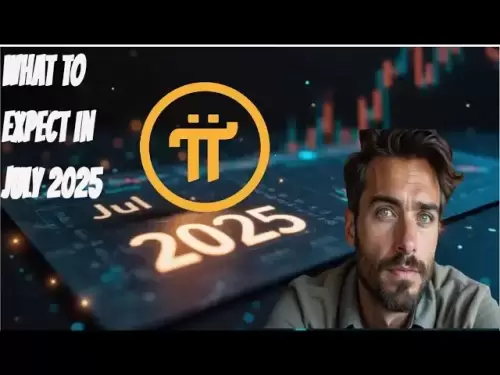-
 Bitcoin
Bitcoin $106,731.2224
-1.05% -
 Ethereum
Ethereum $2,444.9804
-1.20% -
 Tether USDt
Tether USDt $1.0003
0.01% -
 XRP
XRP $2.1882
0.09% -
 BNB
BNB $651.1435
-0.61% -
 Solana
Solana $148.3252
-2.09% -
 USDC
USDC $1.0000
0.01% -
 TRON
TRON $0.2787
0.55% -
 Dogecoin
Dogecoin $0.1598
-3.16% -
 Cardano
Cardano $0.5520
-2.43% -
 Hyperliquid
Hyperliquid $39.0960
-2.64% -
 Bitcoin Cash
Bitcoin Cash $516.9519
2.98% -
 Sui
Sui $2.7011
-2.95% -
 Chainlink
Chainlink $13.0582
-1.71% -
 UNUS SED LEO
UNUS SED LEO $8.9250
-2.53% -
 Stellar
Stellar $0.2359
-0.18% -
 Avalanche
Avalanche $17.3856
-3.73% -
 Toncoin
Toncoin $2.8095
-3.56% -
 Shiba Inu
Shiba Inu $0.0...01121
-1.95% -
 Litecoin
Litecoin $85.2795
-0.85% -
 Hedera
Hedera $0.1471
-2.15% -
 Monero
Monero $319.8004
1.12% -
 Dai
Dai $1.0001
0.01% -
 Ethena USDe
Ethena USDe $1.0001
0.02% -
 Bitget Token
Bitget Token $4.5344
-1.07% -
 Polkadot
Polkadot $3.3224
-2.96% -
 Uniswap
Uniswap $6.9697
-2.75% -
 Aave
Aave $266.1658
-2.25% -
 Pepe
Pepe $0.0...09414
-3.41% -
 Pi
Pi $0.4913
-3.29%
How to operate OKX's option trading?
Learn to trade options on OKX with this guide covering account setup, funding, trading interface navigation, and advanced strategies for managing positions effectively.
Apr 06, 2025 at 06:07 am
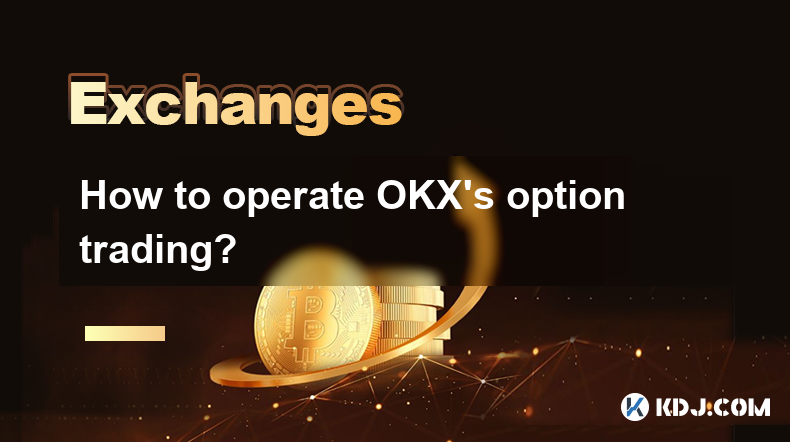
Option trading on OKX can be an exciting and potentially profitable venture for those interested in the cryptocurrency market. This article will guide you through the process of operating OKX's option trading, covering everything from account setup to executing trades and managing your positions. Whether you're a beginner or an experienced trader, understanding the ins and outs of OKX's options platform is crucial for success.
Setting Up Your OKX Account
Before you can start trading options on OKX, you need to set up an account. The process is straightforward but requires attention to detail to ensure security and compliance with OKX's policies.
- Visit the OKX website and click on the "Sign Up" button.
- Enter your email address and create a strong password. Make sure to use a combination of letters, numbers, and special characters.
- Verify your email address by clicking on the link sent to your inbox.
- Complete the KYC (Know Your Customer) process. This involves submitting a government-issued ID and a selfie to verify your identity.
- Enable two-factor authentication (2FA) for added security. You can use an authenticator app or SMS-based 2FA.
Once your account is set up and verified, you can proceed to fund your account and start trading options.
Funding Your OKX Account
To trade options on OKX, you need to deposit funds into your account. OKX supports a variety of deposit methods, including cryptocurrencies and fiat currencies.
- Navigate to the "Deposit" section on the OKX platform.
- Choose the cryptocurrency or fiat currency you want to deposit. Popular options include Bitcoin (BTC), Ethereum (ETH), and USDT.
- Follow the on-screen instructions to complete the deposit. For cryptocurrencies, you'll need to send the funds to the provided wallet address. For fiat, you may need to use a third-party service like bank transfer or credit card.
- Wait for the funds to be credited to your OKX account. This can take anywhere from a few minutes to several hours, depending on the method used.
Once your account is funded, you're ready to explore the options trading section of OKX.
Navigating the Options Trading Interface
OKX's options trading interface is designed to be user-friendly, but it can still be overwhelming for newcomers. Here's a breakdown of the key components you'll encounter:
- Options Market Overview: This section provides a snapshot of the current market conditions, including the most traded options, price movements, and market sentiment.
- Options Chain: The options chain displays all available options contracts for a specific cryptocurrency. You can filter by expiration date, strike price, and type (call or put).
- Order Book: The order book shows the current buy and sell orders for a particular options contract. It helps you gauge market liquidity and potential price movements.
- Trading Chart: The trading chart allows you to analyze price trends and technical indicators. You can customize the chart to suit your trading strategy.
- Order Entry: This is where you'll place your options trades. You can choose between market orders, limit orders, and other advanced order types.
Familiarizing yourself with these components will help you navigate the options trading interface more effectively.
Understanding Options Basics
Before you start trading options on OKX, it's essential to understand the basics of options trading. Options are financial derivatives that give you the right, but not the obligation, to buy or sell an underlying asset at a predetermined price (strike price) before or on a specific date (expiration date).
- Call Options: A call option gives you the right to buy the underlying asset at the strike price. You would buy a call option if you believe the price of the asset will rise.
- Put Options: A put option gives you the right to sell the underlying asset at the strike price. You would buy a put option if you believe the price of the asset will fall.
- Strike Price: The price at which the underlying asset can be bought or sold.
- Expiration Date: The date on which the option expires and becomes worthless if not exercised.
- Premium: The price you pay to buy an option. It's influenced by factors like the underlying asset's price, time until expiration, and market volatility.
Understanding these concepts is crucial for making informed trading decisions on OKX.
Placing Your First Options Trade
Now that you're familiar with the basics, let's walk through the process of placing your first options trade on OKX.
- Select the underlying asset: Choose the cryptocurrency you want to trade options on, such as Bitcoin (BTC) or Ethereum (ETH).
- Choose the expiration date: Decide when you want the option to expire. OKX offers various expiration dates, ranging from weekly to monthly.
- Select the strike price: Pick the strike price that aligns with your market outlook. For a call option, choose a strike price below the current market price if you're bullish. For a put option, choose a strike price above the current market price if you're bearish.
- Determine the option type: Decide whether you want to buy a call option or a put option based on your market prediction.
- Enter the order details: Specify the number of contracts you want to buy and the premium you're willing to pay. You can choose between a market order, which executes immediately at the current market price, or a limit order, which executes only at your specified price.
- Review and confirm the order: Double-check all the details before submitting your order. Once confirmed, the order will be placed in the market.
Congratulations! You've successfully placed your first options trade on OKX.
Managing Your Options Positions
After placing your options trade, it's important to actively manage your positions to maximize profits and minimize losses. Here are some strategies to consider:
- Monitor Market Conditions: Keep an eye on the price movements of the underlying asset and any relevant news or events that could impact the market.
- Set Stop-Loss Orders: Use stop-loss orders to automatically sell your options if the price moves against you, limiting potential losses.
- Adjust Your Positions: If the market moves in your favor, you may want to adjust your positions by rolling over to a different expiration date or strike price.
- Close Out Profitable Trades: Don't be greedy. If your options trade is profitable, consider closing out the position to lock in your gains.
- Exercise or Let Expire: As the expiration date approaches, decide whether to exercise your options or let them expire worthless. Exercising a call option means buying the underlying asset at the strike price, while exercising a put option means selling the underlying asset at the strike price.
By actively managing your options positions, you can increase your chances of success on OKX.
Advanced Options Trading Strategies
Once you're comfortable with the basics, you can explore more advanced options trading strategies on OKX. These strategies can help you profit from various market conditions and manage risk more effectively.
- Covered Calls: This strategy involves selling call options against an existing position in the underlying asset. It can generate additional income but limits potential upside.
- Protective Puts: Buying put options to hedge against a decline in the value of an existing position in the underlying asset. It provides downside protection but comes at a cost.
- Straddles and Strangles: These strategies involve buying both call and put options with the same expiration date but different strike prices. They can profit from significant price movements in either direction.
- Iron Condors: This strategy involves selling an out-of-the-money call and put while simultaneously buying a further out-of-the-money call and put. It can generate income in a range-bound market but has limited profit potential.
- Butterfly Spreads: This strategy involves buying and selling options at three different strike prices to create a risk-defined position. It can profit from a specific price range but has limited upside.
Experimenting with these advanced strategies can help you refine your options trading skills on OKX.
Common Questions About OKX's Option Trading
Q: What are the fees associated with options trading on OKX?
A: OKX charges a fee for both buying and selling options. The fee structure varies depending on the type of order and the volume of your trades. It's important to review the fee schedule on the OKX website to understand the costs involved.
Q: Can I trade options on any cryptocurrency on OKX?
A: OKX offers options trading on a select number of cryptocurrencies, including Bitcoin (BTC) and Ethereum (ETH). The availability of options contracts may change over time, so it's best to check the OKX platform for the most up-to-date information.
Q: How do I know if an options trade is profitable?
A: The profitability of an options trade depends on the price movement of the underlying asset relative to the strike price. If you bought a call option and the price of the underlying asset rises above the strike price, your trade is profitable. Conversely, if you bought a put option and the price of the underlying asset falls below the strike price, your trade is profitable. You can also calculate your potential profit or loss using the options calculator on OKX.
Q: What happens if I don't close my options position before the expiration date?
A: If you don't close your options position before the expiration date, the option will either be automatically exercised or expire worthless, depending on whether it's in-the-money or out-of-the-money. If it's in-the-money, OKX will automatically exercise the option on your behalf, and you'll be obligated to buy or sell the underlying asset at the strike price. If it's out-of-the-money, the option will expire worthless, and you'll lose the premium you paid.
Q: Can I trade options on OKX using leverage?
A: Yes, OKX offers margin trading for options, allowing you to trade with leverage. However, trading with leverage increases both your potential profits and losses, so it's important to use it cautiously and understand the risks involved.
Disclaimer:info@kdj.com
The information provided is not trading advice. kdj.com does not assume any responsibility for any investments made based on the information provided in this article. Cryptocurrencies are highly volatile and it is highly recommended that you invest with caution after thorough research!
If you believe that the content used on this website infringes your copyright, please contact us immediately (info@kdj.com) and we will delete it promptly.
- Powell, Stablecoin Regulation, and Circle's Bold Move: A New York Minute on Crypto's Future
- 2025-07-02 02:30:12
- Ethereum Price, Tom Lee, and Bitcoin: A New Era for Crypto?
- 2025-07-02 02:30:12
- Hoskinson, Ripple, Cardano DeFi: A New Era of Collaboration?
- 2025-07-02 02:35:12
- BlockDAG, ALGO, and the Crypto Trends Shaping 2025
- 2025-07-02 01:50:12
- Cold Wallet, Token, Gains: Is CWT the Smartest Crypto Move?
- 2025-07-02 01:10:12
- Pi Coin's Rocky Ride: Support Levels, Recovery Timeline, and What the Experts Are Saying
- 2025-07-02 01:10:12
Related knowledge
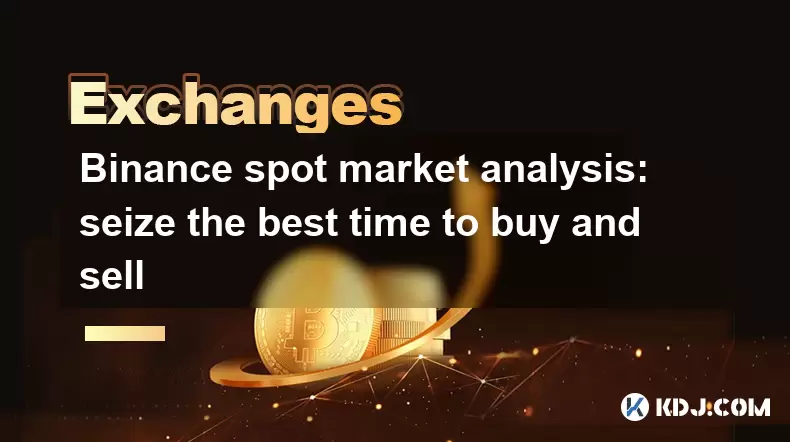
Binance spot market analysis: seize the best time to buy and sell
Jun 19,2025 at 04:56pm
Understanding the Binance Spot MarketThe Binance spot market is one of the most popular platforms for cryptocurrency trading globally. It allows users to trade digital assets at current market prices, making it essential for traders aiming to buy low and sell high. Unlike futures or margin trading, spot trading involves direct ownership of the asset aft...
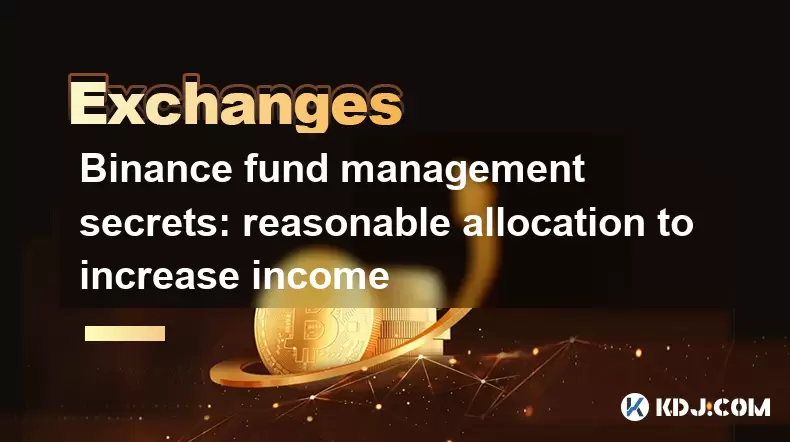
Binance fund management secrets: reasonable allocation to increase income
Jun 22,2025 at 02:29pm
Understanding Binance Fund ManagementBinance fund management involves strategic allocation of your cryptocurrency assets to optimize returns while managing risk. The key to successful fund management lies in understanding how different investment options on the Binance platform can be utilized to create a diversified portfolio. This includes spot tradin...
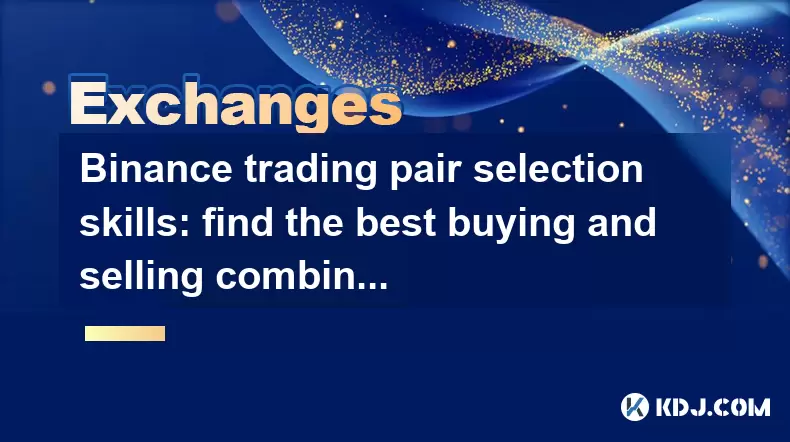
Binance trading pair selection skills: find the best buying and selling combination
Jun 23,2025 at 02:49am
Understanding the Basics of Trading Pairs on BinanceBefore diving into trading pair selection skills, it's essential to understand what a trading pair is. On Binance, a trading pair refers to two cryptocurrencies that can be traded against each other. For example, BTC/USDT means Bitcoin is being traded against Tether. Each trading pair has its own liqui...
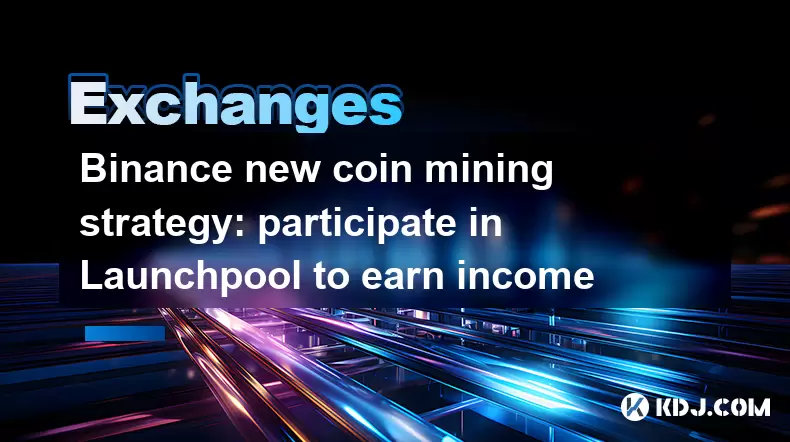
Binance new coin mining strategy: participate in Launchpool to earn income
Jun 23,2025 at 11:56am
What is Binance Launchpool and how does it work?Binance Launchpool is a feature introduced by the world’s largest cryptocurrency exchange, Binance, to allow users to earn new tokens through staking. This platform enables users to stake their existing cryptocurrencies (such as BNB, BUSD, or other supported assets) in exchange for newly launched tokens. T...
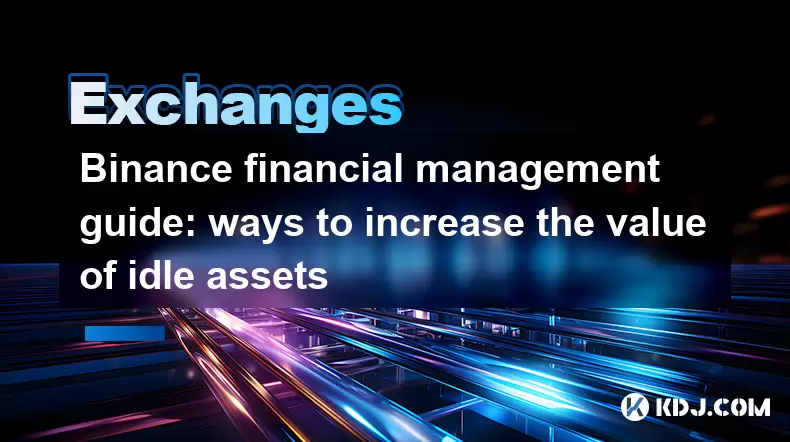
Binance financial management guide: ways to increase the value of idle assets
Jun 19,2025 at 11:22pm
Understanding Idle Assets in the Cryptocurrency SpaceIn the fast-paced world of cryptocurrency, idle assets refer to digital currencies that are not actively being used for trading, staking, or yield farming. Holding these funds in a wallet without utilizing them means missing out on potential growth opportunities. Binance, as one of the leading platfor...
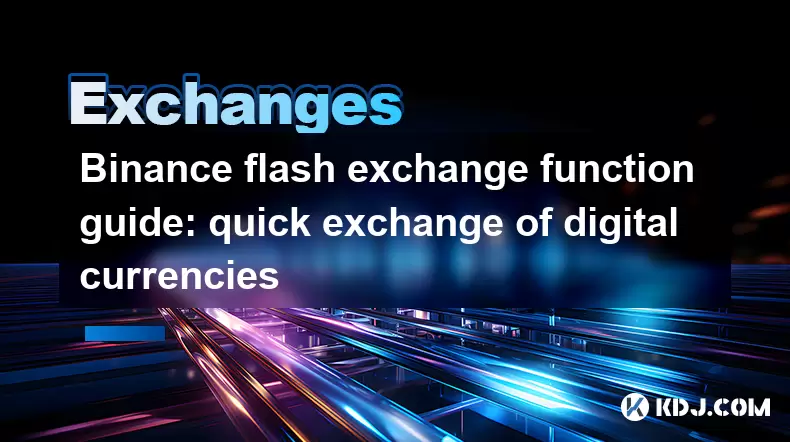
Binance flash exchange function guide: quick exchange of digital currencies
Jun 23,2025 at 12:29pm
What is the Binance Flash Exchange Function?The Binance Flash Exchange function is a powerful tool designed to allow users to instantly swap between supported cryptocurrencies without the need for placing traditional buy/sell orders. This feature simplifies the trading process by offering a direct exchange mechanism, eliminating the requirement to conve...

Binance spot market analysis: seize the best time to buy and sell
Jun 19,2025 at 04:56pm
Understanding the Binance Spot MarketThe Binance spot market is one of the most popular platforms for cryptocurrency trading globally. It allows users to trade digital assets at current market prices, making it essential for traders aiming to buy low and sell high. Unlike futures or margin trading, spot trading involves direct ownership of the asset aft...

Binance fund management secrets: reasonable allocation to increase income
Jun 22,2025 at 02:29pm
Understanding Binance Fund ManagementBinance fund management involves strategic allocation of your cryptocurrency assets to optimize returns while managing risk. The key to successful fund management lies in understanding how different investment options on the Binance platform can be utilized to create a diversified portfolio. This includes spot tradin...

Binance trading pair selection skills: find the best buying and selling combination
Jun 23,2025 at 02:49am
Understanding the Basics of Trading Pairs on BinanceBefore diving into trading pair selection skills, it's essential to understand what a trading pair is. On Binance, a trading pair refers to two cryptocurrencies that can be traded against each other. For example, BTC/USDT means Bitcoin is being traded against Tether. Each trading pair has its own liqui...

Binance new coin mining strategy: participate in Launchpool to earn income
Jun 23,2025 at 11:56am
What is Binance Launchpool and how does it work?Binance Launchpool is a feature introduced by the world’s largest cryptocurrency exchange, Binance, to allow users to earn new tokens through staking. This platform enables users to stake their existing cryptocurrencies (such as BNB, BUSD, or other supported assets) in exchange for newly launched tokens. T...

Binance financial management guide: ways to increase the value of idle assets
Jun 19,2025 at 11:22pm
Understanding Idle Assets in the Cryptocurrency SpaceIn the fast-paced world of cryptocurrency, idle assets refer to digital currencies that are not actively being used for trading, staking, or yield farming. Holding these funds in a wallet without utilizing them means missing out on potential growth opportunities. Binance, as one of the leading platfor...

Binance flash exchange function guide: quick exchange of digital currencies
Jun 23,2025 at 12:29pm
What is the Binance Flash Exchange Function?The Binance Flash Exchange function is a powerful tool designed to allow users to instantly swap between supported cryptocurrencies without the need for placing traditional buy/sell orders. This feature simplifies the trading process by offering a direct exchange mechanism, eliminating the requirement to conve...
See all articles





















